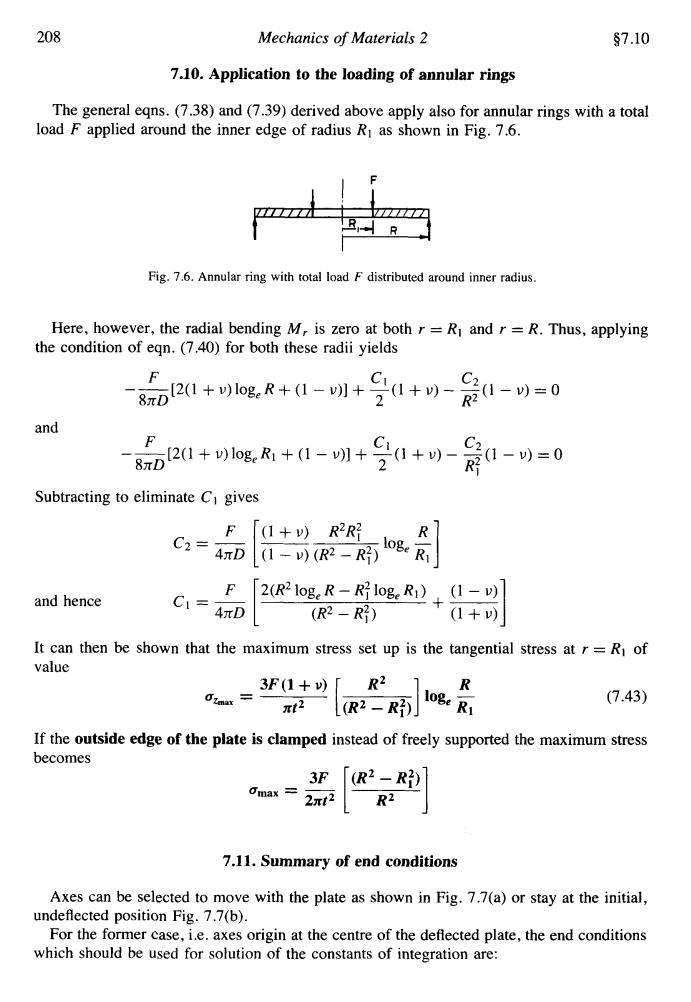正在加载图片...

208 Mechanics of Materials 2 $7.10 7.10.Application to the loading of annular rings The general eqns.(7.38)and(7.39)derived above apply also for annular rings with a total load F applied around the inner edge of radius Ri as shown in Fig.7.6. R Fig.7.6.Annular ring with total load F distributed around inner radius. Here,however,the radial bending M,is zero at both r=R and r =R.Thus,applying the condition of eqn.(7.40)for both these radii yields 21+log,R+1-明+号1+叭-意d-)=0 F and 21+0iog,R+-1+号1+W-9 F (1-)=0 Subtracting to eliminate Ci gives F (1+ )R2R7 R C2= 4πD (1-)(R2-R) F and hence C1= 2(R2 10g.R-Rilog R)(1-) 4πD (R2-R) (1+) It can then be shown that the maximum stress set up is the tangential stress at r=R of value 3F(1+) R2 R πt2 1(R2-R7] loge R1 (7.43) If the outside edge of the plate is clamped instead of freely supported the maximum stress becomes 3F (R2-R) 2πt2 R2 7.11.Summary of end conditions Axes can be selected to move with the plate as shown in Fig.7.7(a)or stay at the initial, undeflected position Fig.7.7(b). For the former case,i.e.axes origin at the centre of the deflected plate,the end conditions which should be used for solution of the constants of integration are:208 Mechanics of Materials 2 57.10 7.10. Application to the loading of annular rings The general eqns. (7.38) and (7.39) derived above apply also for annular rings with a total load F applied around the inner edge of radius R1 as shown in Fig. 7.6. IF Fig. 7.6. Annular ring with total load F distributed around inner radius. Here, however, the radial bending M, is zero at both r = R1 and r = R. Thus, applying the condition of eqn. (7.40) for both these radii yields F CI c2 8nD 2 R2 -__ [2(1 + U) log, R + (1 - u)] + -(1 + U) - -(1 - U) = 0 and F c1 c2 -- [2(1 + v)log,RI + (1 - u)] + -(1 + U) - -(1 - U) = 0 8TD 2 R: Subtracting to eliminate CI gives loge 6 "1 and hence It can then be shown that the maximum stress set up is the tangential stress at r = R1 of value R - azmn.x - (7.43) If the outside edge of the plate is clamped instead of freely supported the maximum stress becomes 7.11. Summary of end conditions Axes can be selected to move with the plate as shown in Fig. 7.7(a) or stay at the initial, For the former case, i.e. axes origin at the centre of the deflected plate, the end conditions undeflected position Fig. 7.7(b). which should be used for solution of the constants of integration are: